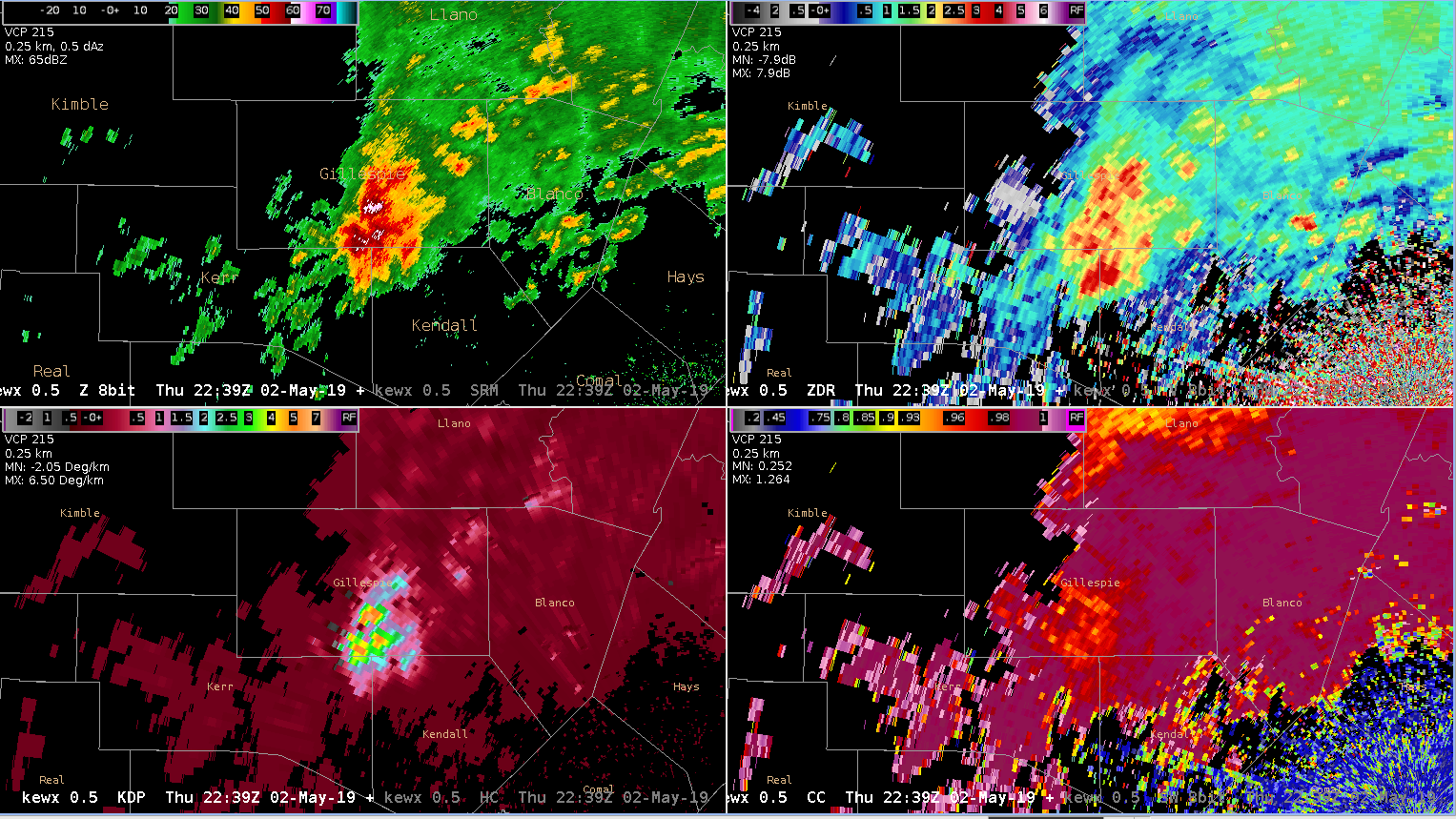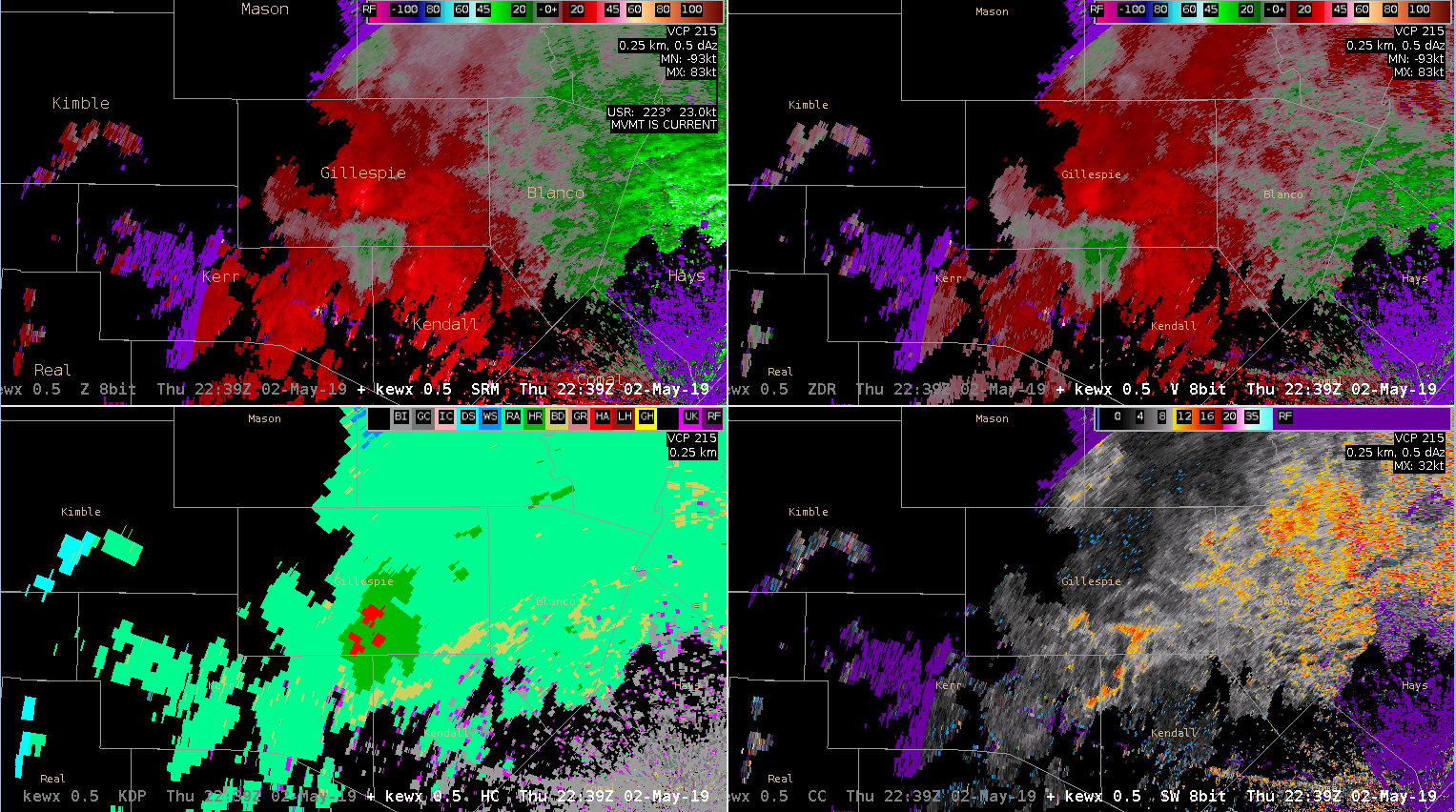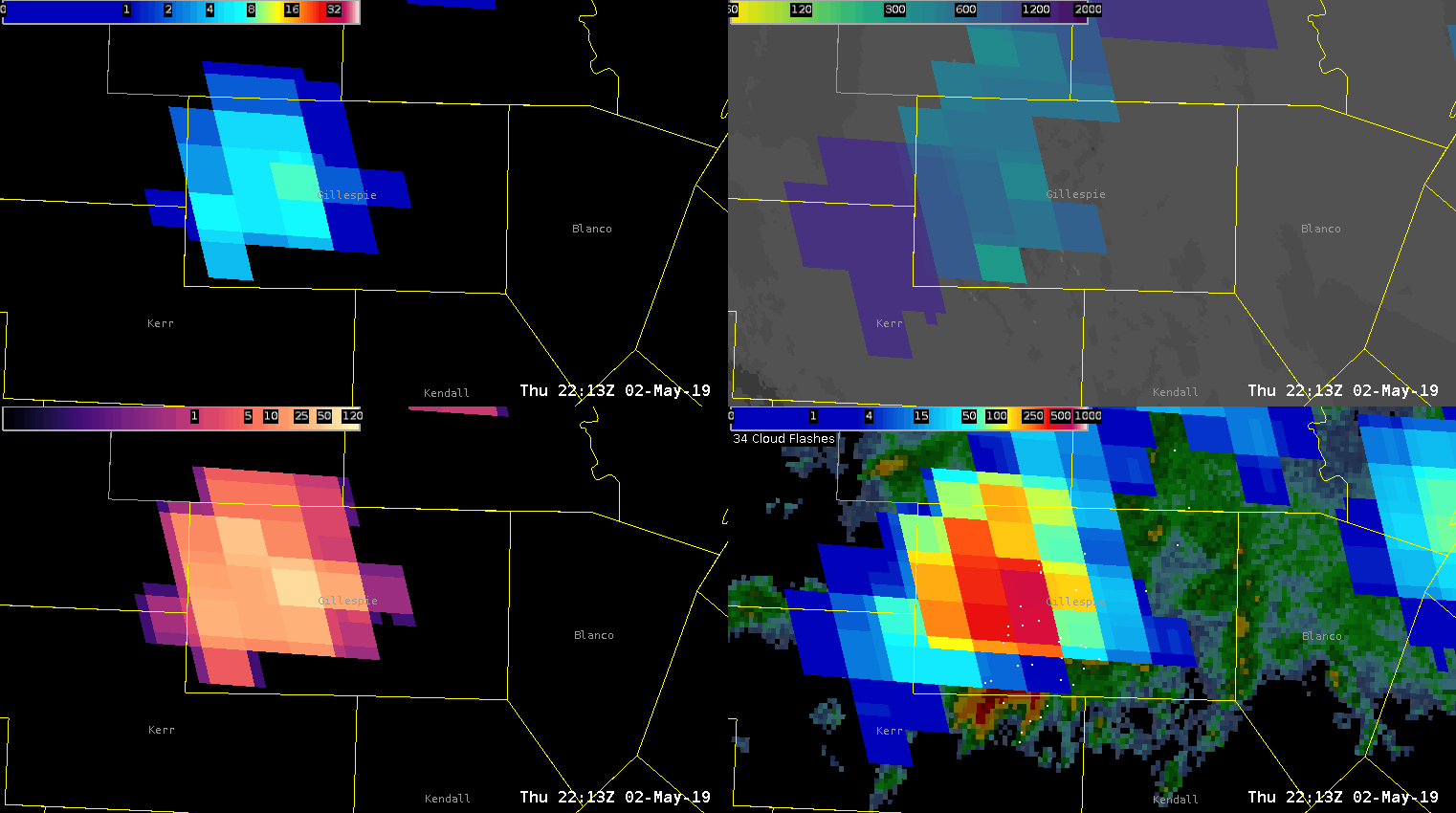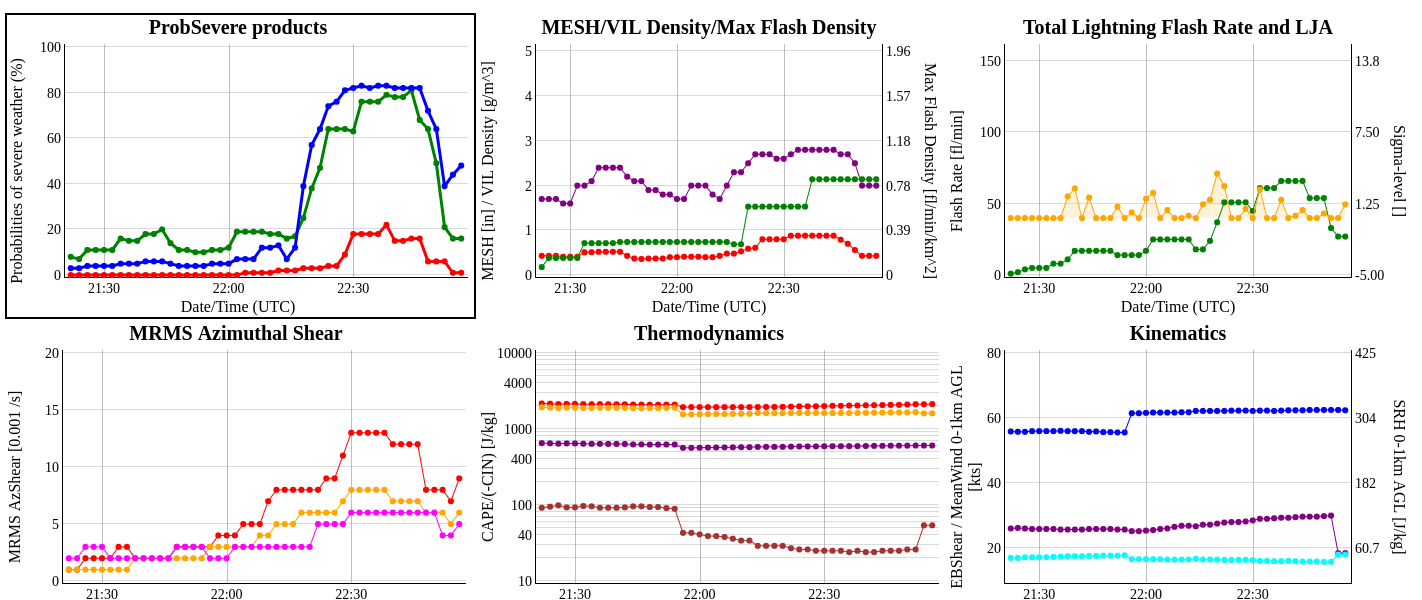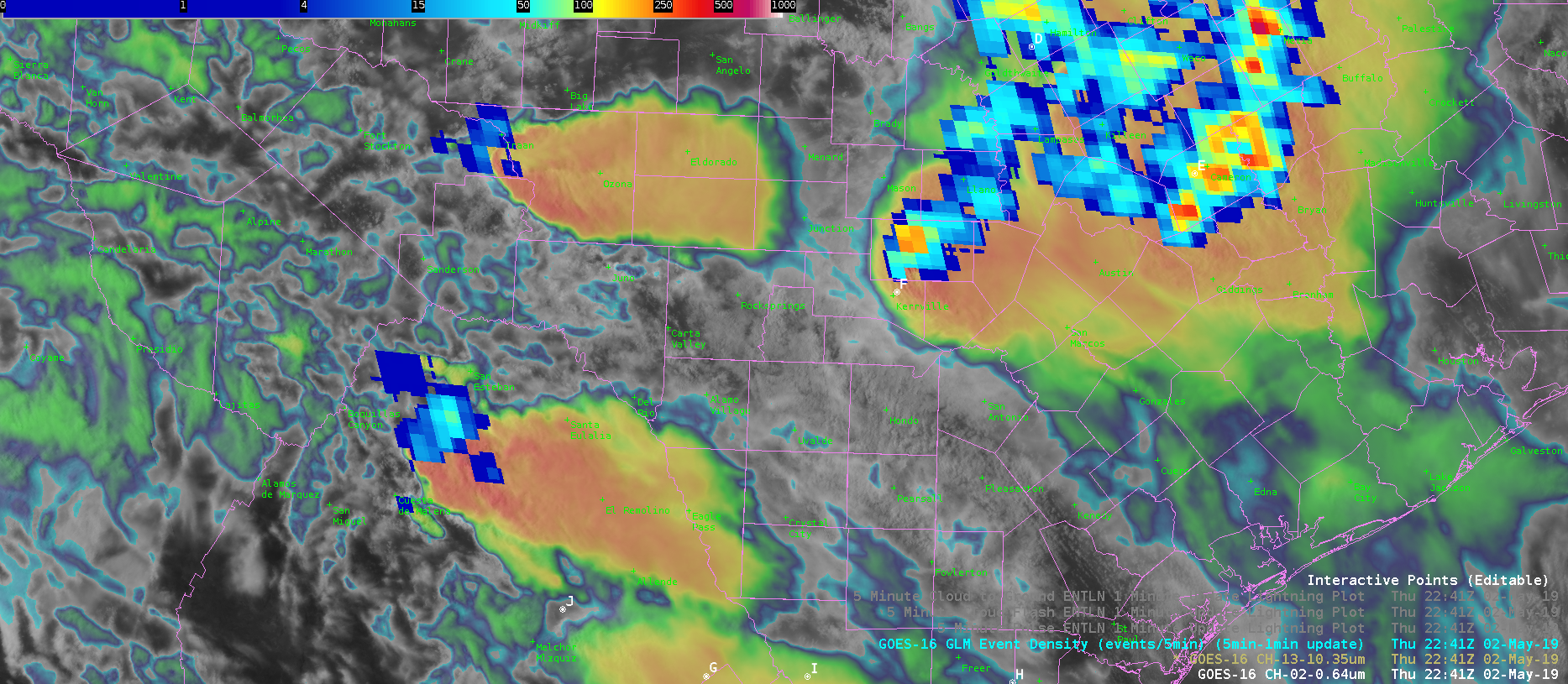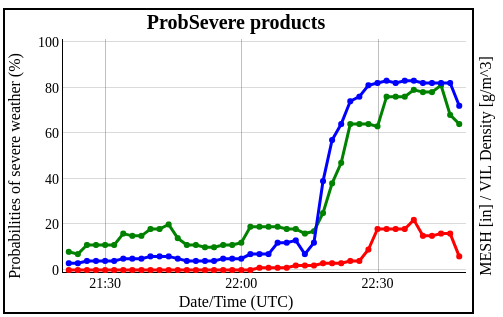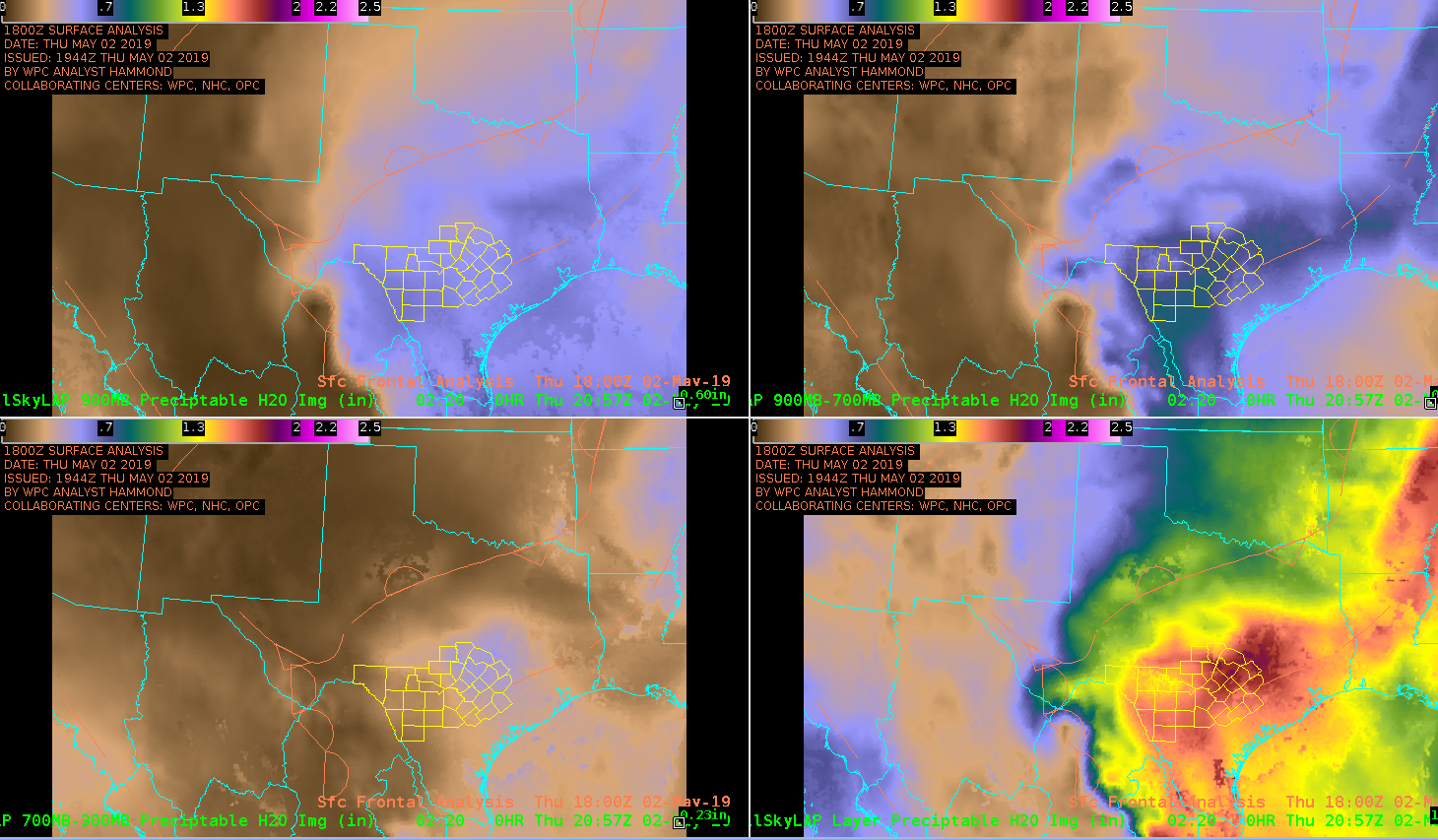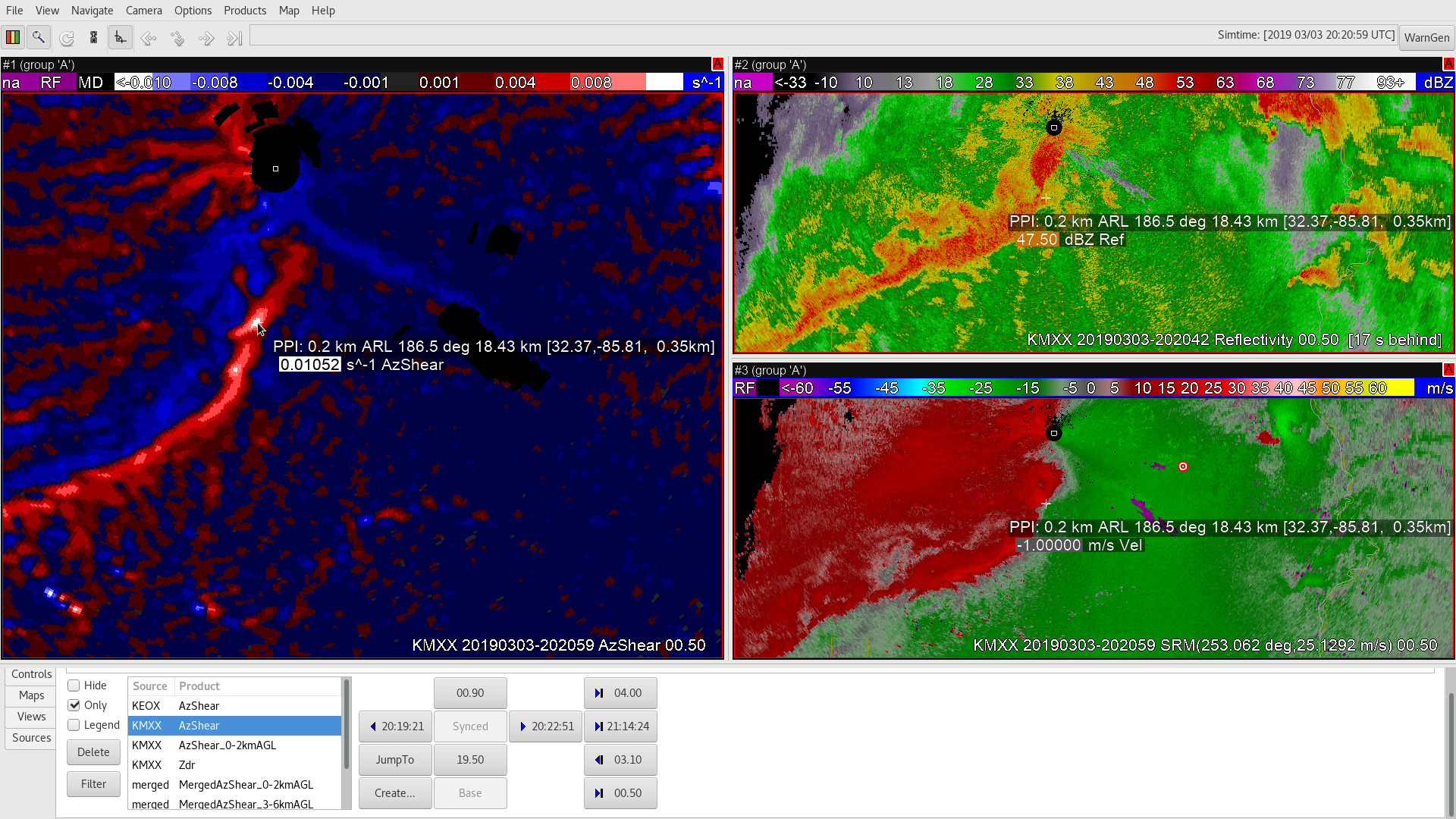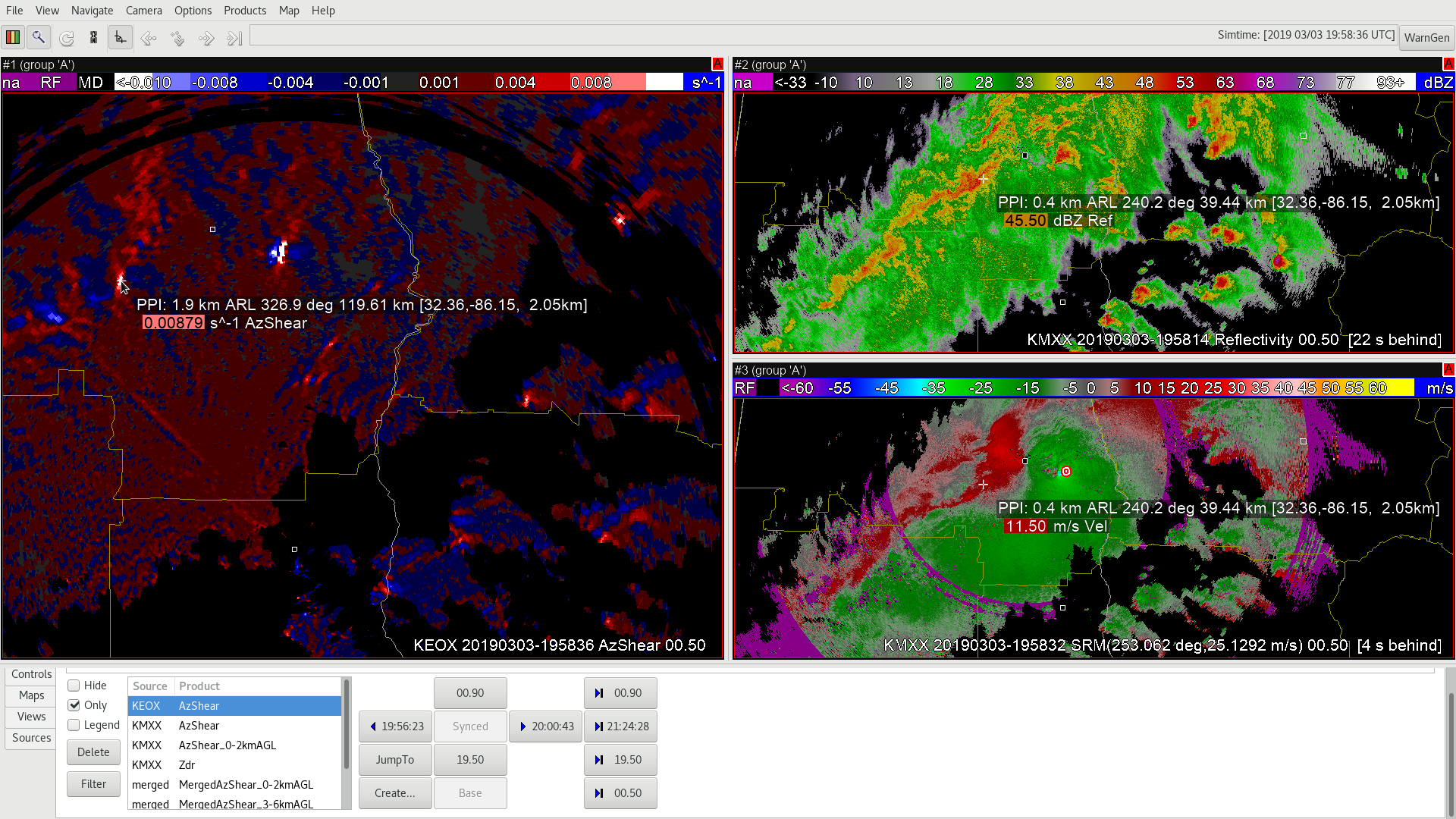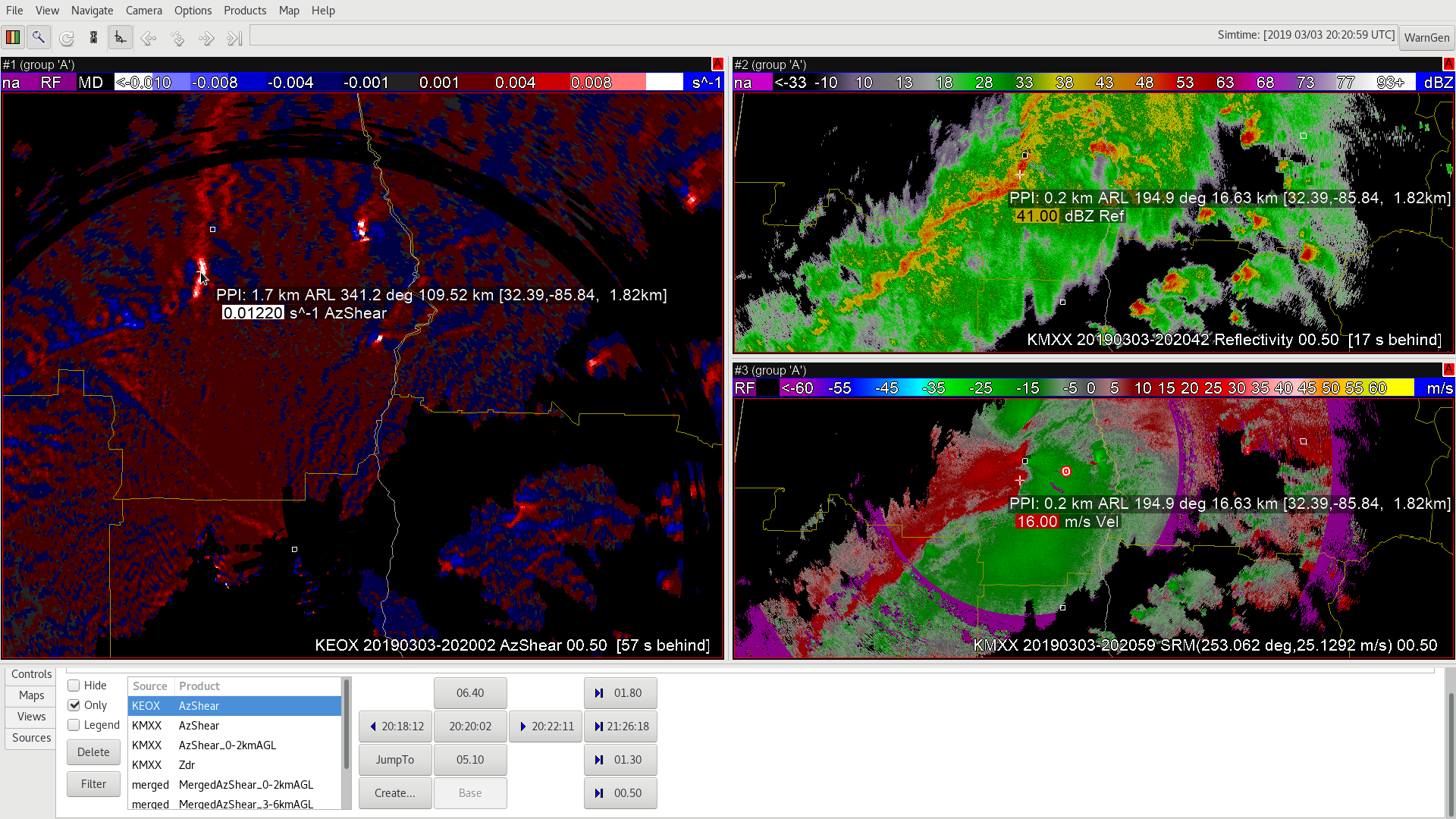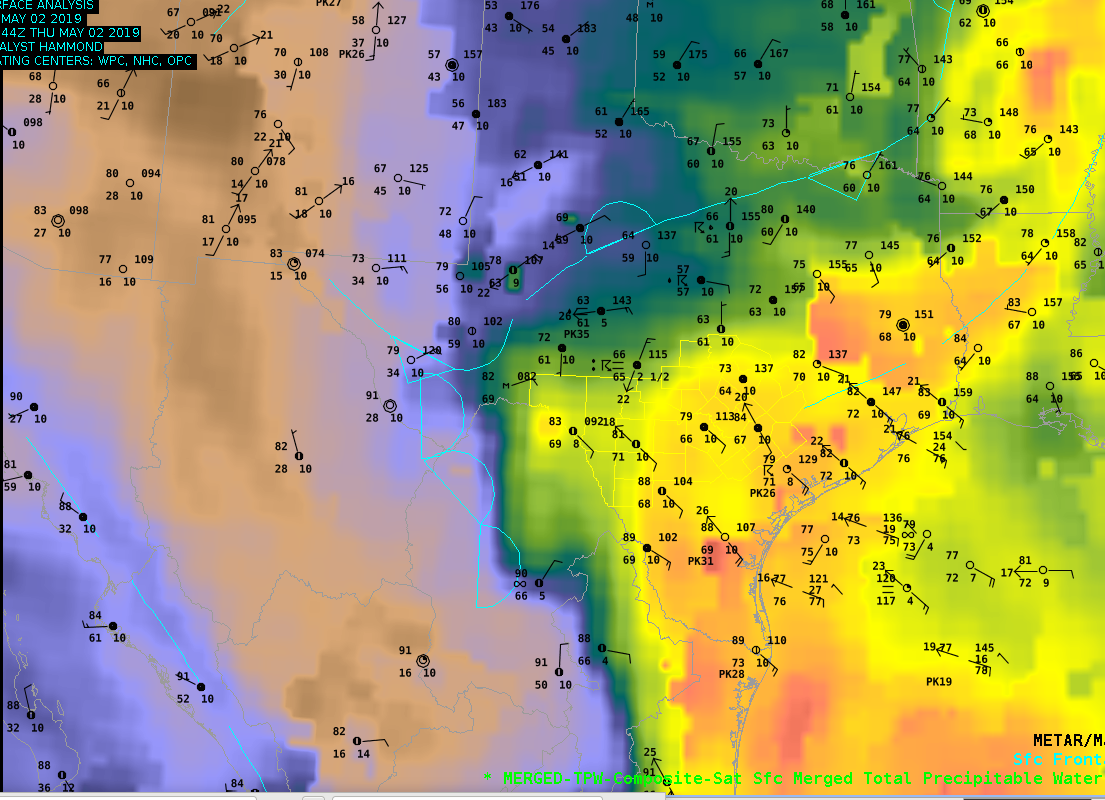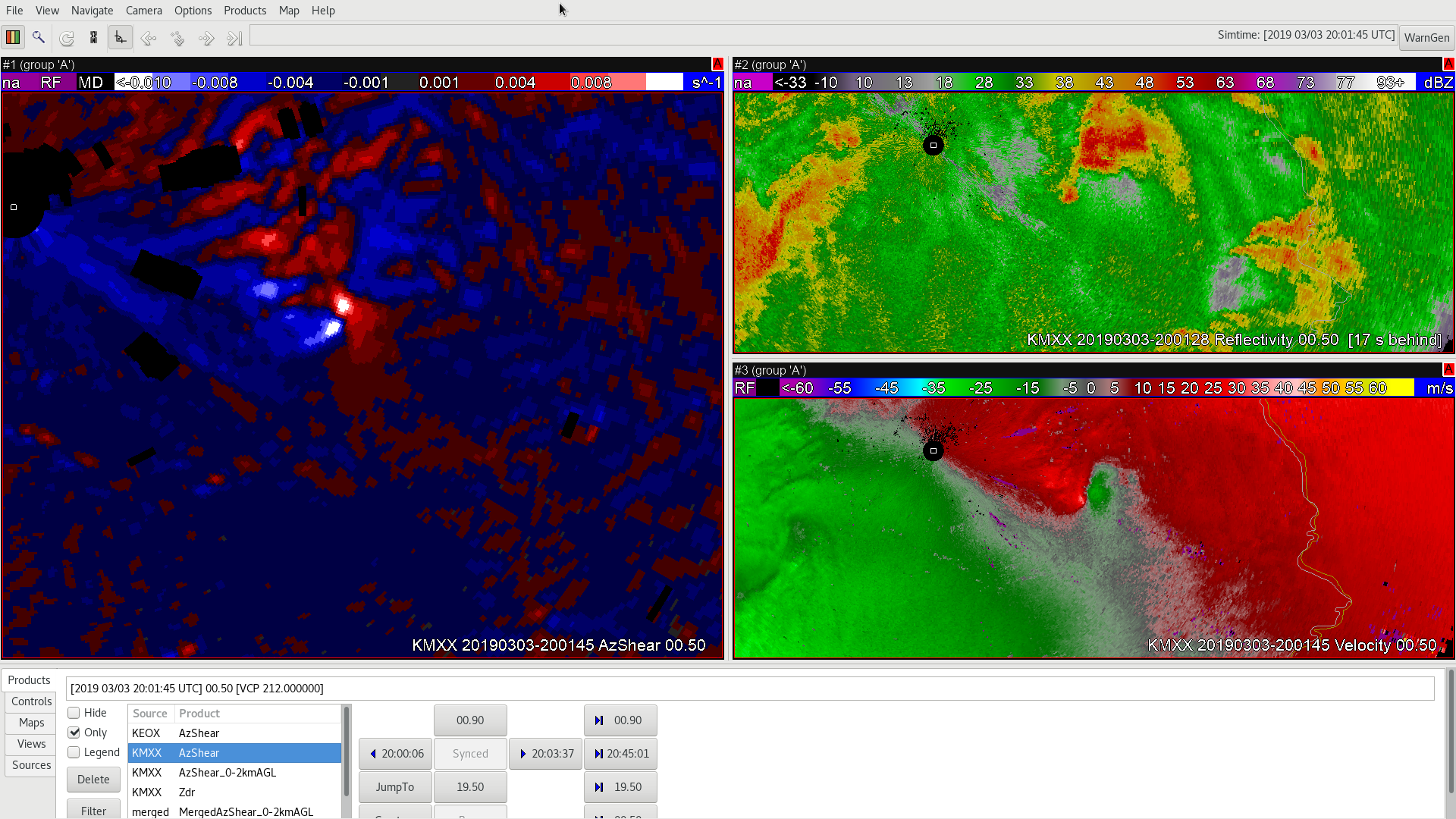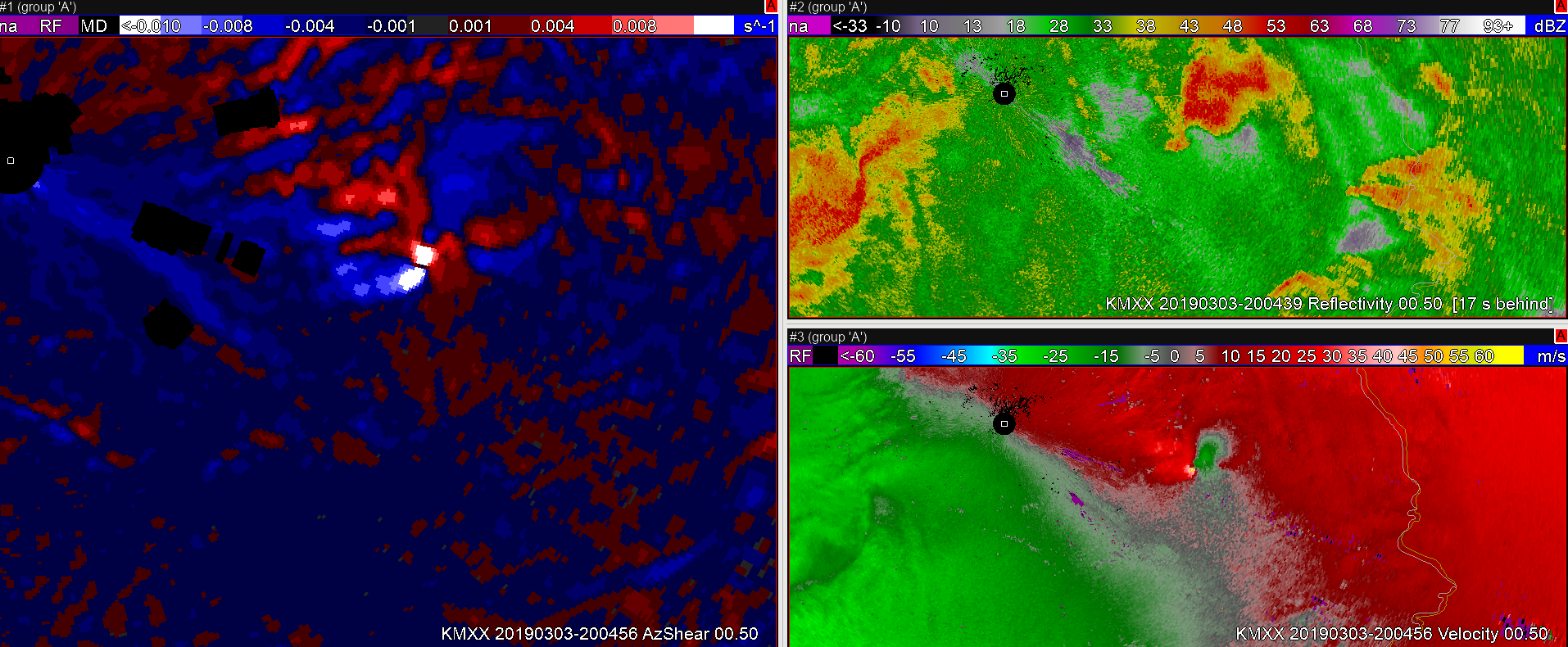The first feature I noticed at first glance of all of the AzShear products was the “time lag” so-to-speak of the merged AzShear products. More specifically, I compared the velocity couplet with the AzShear product and the merged 0-2km AzShear product. The merged product shows a disconnected and smeared/cluttered version of the max shear couplet region, making it difficult to find exactly which high value center you would like to focus on.
 Above is an example of those three products with my mouse over the circulation center for reference. In particular, I grabbed the 0.9deg radar tilt to get the middle of the averaged layer (~1km AGL). Because of this multi-maximum issue in the merged product, I find the main AzShear product more useful and trustworthy than the merged product with this particular case.
Above is an example of those three products with my mouse over the circulation center for reference. In particular, I grabbed the 0.9deg radar tilt to get the middle of the averaged layer (~1km AGL). Because of this multi-maximum issue in the merged product, I find the main AzShear product more useful and trustworthy than the merged product with this particular case.
In addition, I was able to pick up a “debris ball” signature at a similar time. I noticed the low CC was spatially ahead of both of the AzShear product maximum couplets. This tells me to not solely rely on a one product as the main location of greatest shear or tornadic location, just because there will be a slight spatial lag between products (more noticeable in the merged product) . This also makes it clear in making sure to continue to utilize velocity data (as is well known with debris ball signatures). Image below:

This debris ball signature was notable at both the 0.5deg tilt and the 0.9deg tilt, so I kept the 0.9deg screen for consistency.
Lastly, I noticed the strength of the AzShear couplets began ramping up and showing maximum values in prior temporal radar scans to the debris ball signature, which is to be expected. I would be more concerned if it was the other way around. Having all of these signatures in place further verifies the strength of the system.
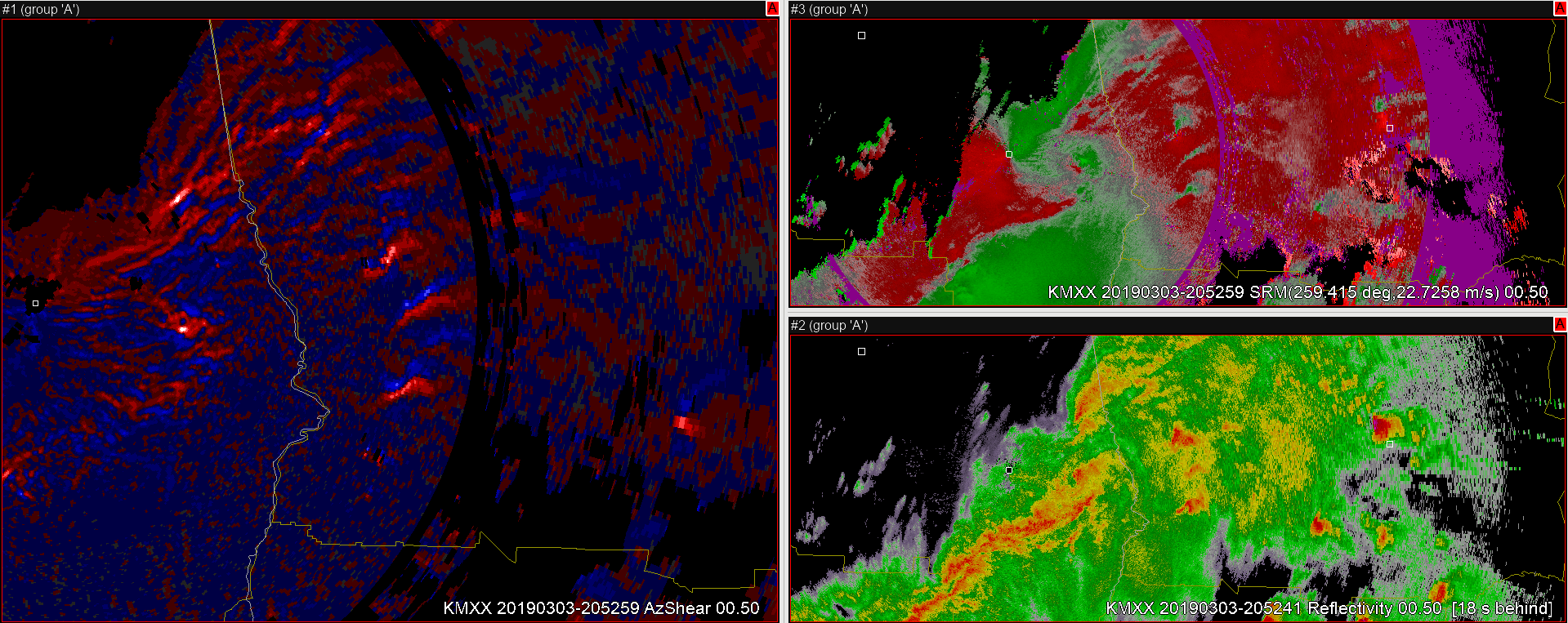


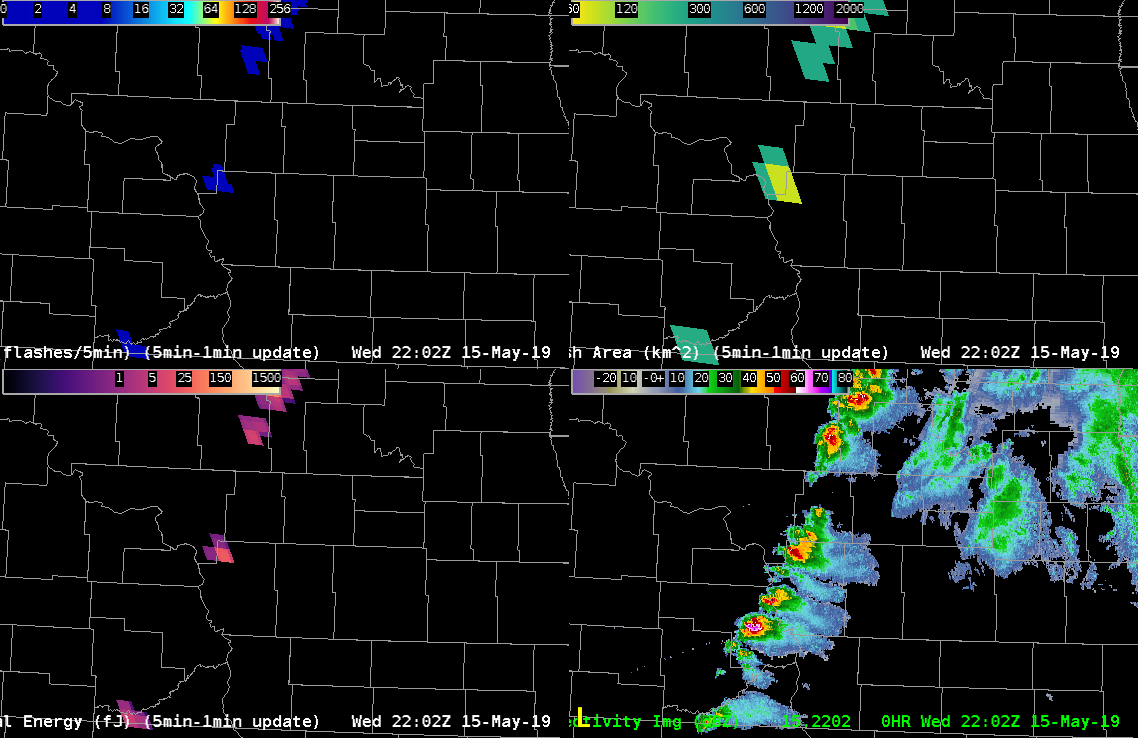
 Above is an example of those three products with my mouse over the circulation center for reference. In particular, I grabbed the 0.9deg radar tilt to get the middle of the averaged layer (~1km AGL). Because of this multi-maximum issue in the merged product, I find the main AzShear product more useful and trustworthy than the merged product with this particular case.
Above is an example of those three products with my mouse over the circulation center for reference. In particular, I grabbed the 0.9deg radar tilt to get the middle of the averaged layer (~1km AGL). Because of this multi-maximum issue in the merged product, I find the main AzShear product more useful and trustworthy than the merged product with this particular case.
